Associated with the cultural life of the Vietnamese people, once becoming the inspiration for many poetic works, the Non La (Palm-leaf conical hat) and the Ao Dai have become a symbol of Vietnamese culture and the pride of the Vietnamese people.
Ao Dai - a image of charming Vietnam
Unlike the traditional costumes of neighboring countries such as Japanese kimono, Korean Hanbok, Indian Sari, which require sophisticated wear, the Vietnamese Ao Dai is more simple, neat, and convenient while still exuding an elegant aura. For that reason, the Vietnamese Ao dai has crept into every corner of Vietnamese cultural life, being worn on traditional occasions such as Tet, weddings, and popular in daily life.
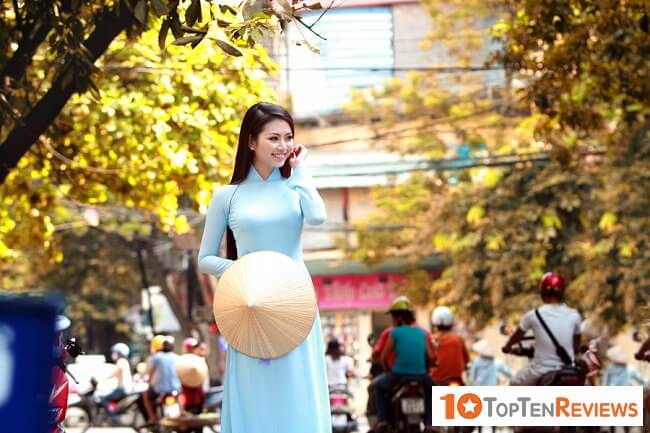
Over time, the Ao Dai, which has undergone many events and forms, has been closely associated with the national spirit and Vietnamese cultural identity, representing a generation of Vietnamese people who know how to save and preserve the most outstanding human values.
Ao Dai has entered many works of art and has become a typical image in poetry. The Ao Dai follows our footsteps to school, goes all over the country, appears in international events, presents Vietnamese throughout the five continents.
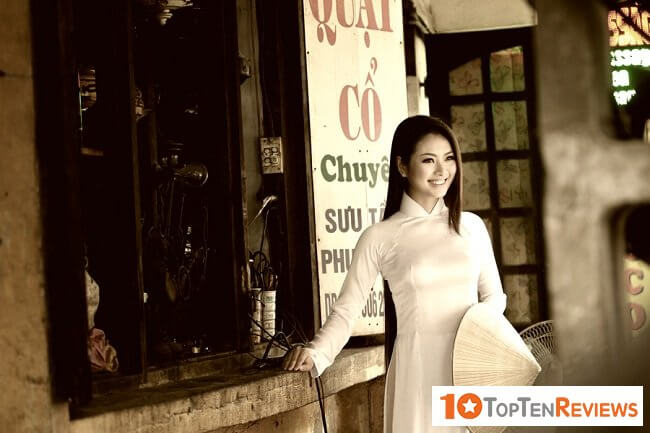
Where did the origin of the Ao Dai come from? Perhaps many people do not remember. It is only known that the image of ao dai fluttering in the wind has appeared all over the antiques handed down thousands of years ago, on the face of the Ngoc Lu bronze drum, on the Dao Thinh bronze jar, etc. Most derived from the consignment shirt, similar in shape to the four-body shirt. But with a cumbersome structure, not convenient for farming and trading, the delivery shirt was quickly transformed, becoming the Ao Dai with the present appearance over a long period of time.
The traditional Vietnamese ao dai style today harmonizes all the beauty of the old and the new and contributes to honoring the graceful, elegant and lovely beauty of Vietnamese women. After nearly a century with many small changes in form to catch up with modern tastes and fashion, the Ao Dai still retains the national spirit and basic shape.
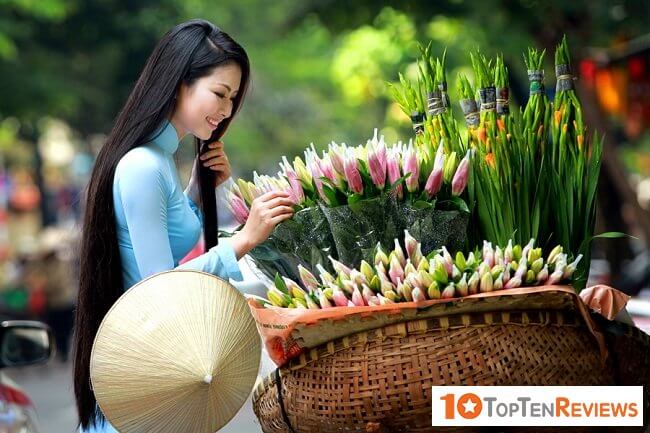
Whether it is an old traditional ao dai or a modern ao dai today, the ao dai is always respected and preserved by Vietnamese women as a treasure that needs to be treasured. It can be said that where there is a Vietnamese woman, there is a shadow of ao dai. Vietnamese Ao Dai is a costume and raised to symbolize every Vietnamese person's culture and traditional beauty. Looking at the ao dai is like seeing a national silhouette hidden deep in it.
During the 4000 years of Vietnam's struggle for independence and against foreign invaders, the Ao Dai has always been preserved as a sacred symbol of the nation. In addition to the traditionally elegant and elegant beauty, the Ao Dai also reminds the wearer of the morality of being a human, becoming the national costume, national pride. It also reminds each Vietnamese person to cherish preserving the precious traditional values left by our forefathers, continuing to promote and enhance the good values left by thousands of generations.
Non La - One of the special hats in the world
Referring to the Ao Dai, we cannot ignore the Non La - Palm leaf conical hat, which is also one of the familiar images associated with the life of every Vietnamese in the past. The image of a gentle and elegant Vietnamese woman in an ao dai and conical hat leaning shyly as if trying to hide a glance, a smile is the most beautiful and sexy image of a Vietnamese woman entering many literary works.

In addition to the function of avoiding sun and rain, the Non La also perfects and enhances the beauty of Vietnamese women, discreet, elegant, but full of charm. Like the ao dai, the Non La has a very long history, about 2500-3000 years ago, associated with the image of the Vietnamese people. People wear hats to the market and the festival. In the fields, in the alleys loomed the sports hats, replaces the cooling fan on hot summer days. The hat is like a souvenir to send the mother's affection on the day her daughter gets married.
Vietnamese traditional hat has many types, developed over time, becoming more and more convenient. However, the most popular is still the Non La - Palm leaf conical hat. From rural to urban, no one does not own a conical hat. Conical hats both exude decency, simplicity and show a unique beauty, very attractive and seductive.
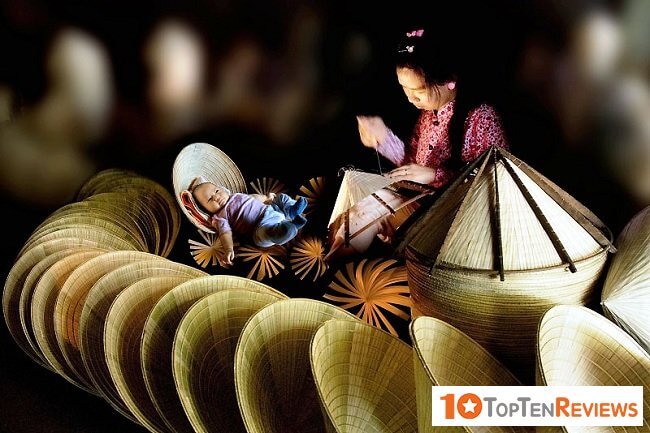
To make such an artistic product, conical hat makers had to refine each needle and thread. A conical hat is formed containing a lot of emotions of the artist put into it. Conical hats have become the life of many people, a material that contributes to the livelihood of many Vietnamese people. Today, although conical hats are no longer so popular, these traditional craft villages still exist intact and are cherished. The profession of hats is difficult, but the words are few, but they are like a spiritual food that has taken root in the life of each artist, making them impossible to give up. Therefore, each conical hat is born with a life, a soul, and a separate meaning, representing the culture imbued with the national identity of the Vietnamese people.
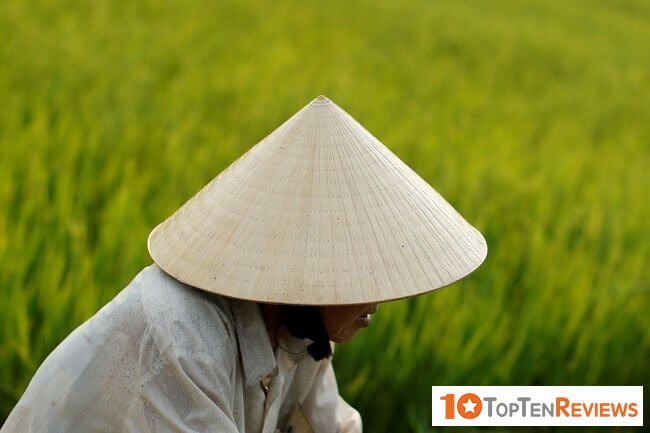
The image of the Ao Dai and Non La has gone through many events and changes to get the best look today. Although they are no longer seen as often as before, their symbolism is increasingly enhanced, following many Vietnamese people to all parts of the country, appearing in many beauty contests and many television programs. Every time we look at the harmonious combination of these two costumes, like the water flowing along the lines of a woman's soft and graceful body, I can't help but arouse national pride and joy. The two flaps of ao dai are like wings, lifting the elegant steps of a girl, shaking both the space and the surrounding scenery, shaking the hearts of many Vietnamese and friends from all over the world.
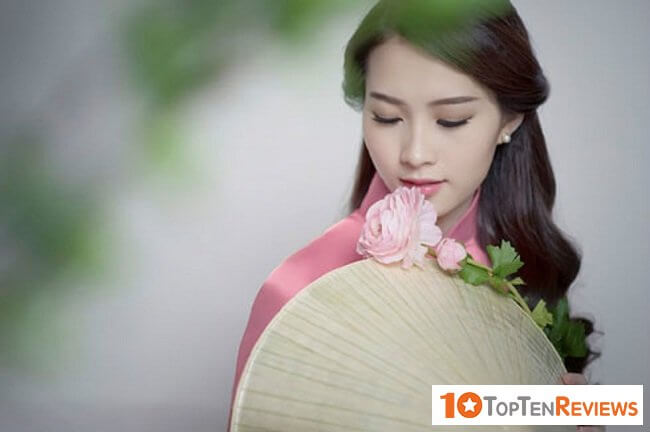
It is the pride of Vietnamese people and also the highlight when foreign tourists mention Vietnam. Our mission is to cherish and preserve those long-standing traditional cultural values so that they do not fade, always live forever as an immortal symbol of the spirit, self-respect, and beauty of ethnicity.
